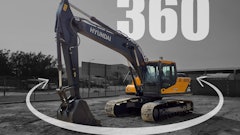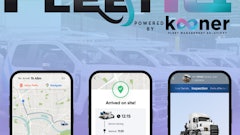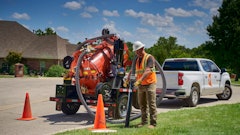
Telematics applications exist for virtually every industry, but their capabilities go much deeper and provide distinct advantages for driver safety professionals and fleet managers.
What’s more, the customization capabilities of today’s telematics devices mean that driver safety professionals can receive specific data that simply wasn’t available even a decade ago. And with this data comes the ability to analyze and improve driver performance at a precise level that can save time, money — and lives.
The role of telematics in analyzing driver behavior is one of its greatest assets. According to the 2015 Cost of Motor Vehicles Crashes to Employers Report, traffic crashes cost U.S. employers $47.4 billion in crash-related expenses. This includes medical care, liability, lost productivity and property damage.
With the clear correlation between unsafe driving and crashes, the need for driver safety is the No. 1 concern of driver safety professionals and fleet managers. With telematics, these professionals have direct insight into driver behaviors such as:
- Speeding
- Harsh braking or acceleration
- Seatbelt usage
- Tailgating
- Cornering problems
By identifying problems with driver behavior, managers are then able to address the root cause. For example, if the data shows that a driver has repeated instances of harsh braking, the manager might conclude that tailgating or failure to maintain proper eye lead time is the issue. After identifying the cause of the problem, managers can then take steps (like additional training) to change driving behavior before it leads to a serious incident on the road.
[SPONSORED] Increase profitability and efficiency with your fleet now with a free fleet management system demo >>
The results of using telematics to monitor and correct driver behavior are compelling; a 2016 survey found that 69% of fleet managers reported a noticeable improvement in driving behavior when they began using telematics. In that same survey, driver safety was cited as the No. 1 benefit of investing in telematics. Other benefits of telematics include include:
- Productivity: Tracking driver activity during the day means you can see where employees are spending their time and make adjustments as needed. Telematics can provide a documented and indisputable record of where drivers are at any given time and can be a useful tool for minimizing risk.
- Fleet optimization: By tracking fuel fill-ups and usage, vehicle speed, idling time, vehicle maintenance and more, telematics can help reduce waste. Things like the amount of time a vehicle spends idling or how much fuel is consumed give a good indication of how a driver is using their time and where improvements could be made.
- Compliance: From electronic logging devices (ELDs) and fuel tax to the FMCSA’s Compliance, Safety, Accountability (CSA) program, telematics helps keep drivers and organizations organized and ensures compliance with all regulations.
If you’re looking for ways to improve safety, reduce crashes and complement your driver safety training, telematics might be the right solution for you. Here is a more in-depth look at how telematics can improve driver behavior and boost fleet efficiency.
Smith System is the trusted global leader in crash-avoidance driver safety training. They train tens of thousands of drivers each year, including drivers from more than half of Fortune 500 companies’ fleets. Their proven methods prevent crashes, reduce fuel and maintenance costs and — most importantly — save lives.



















